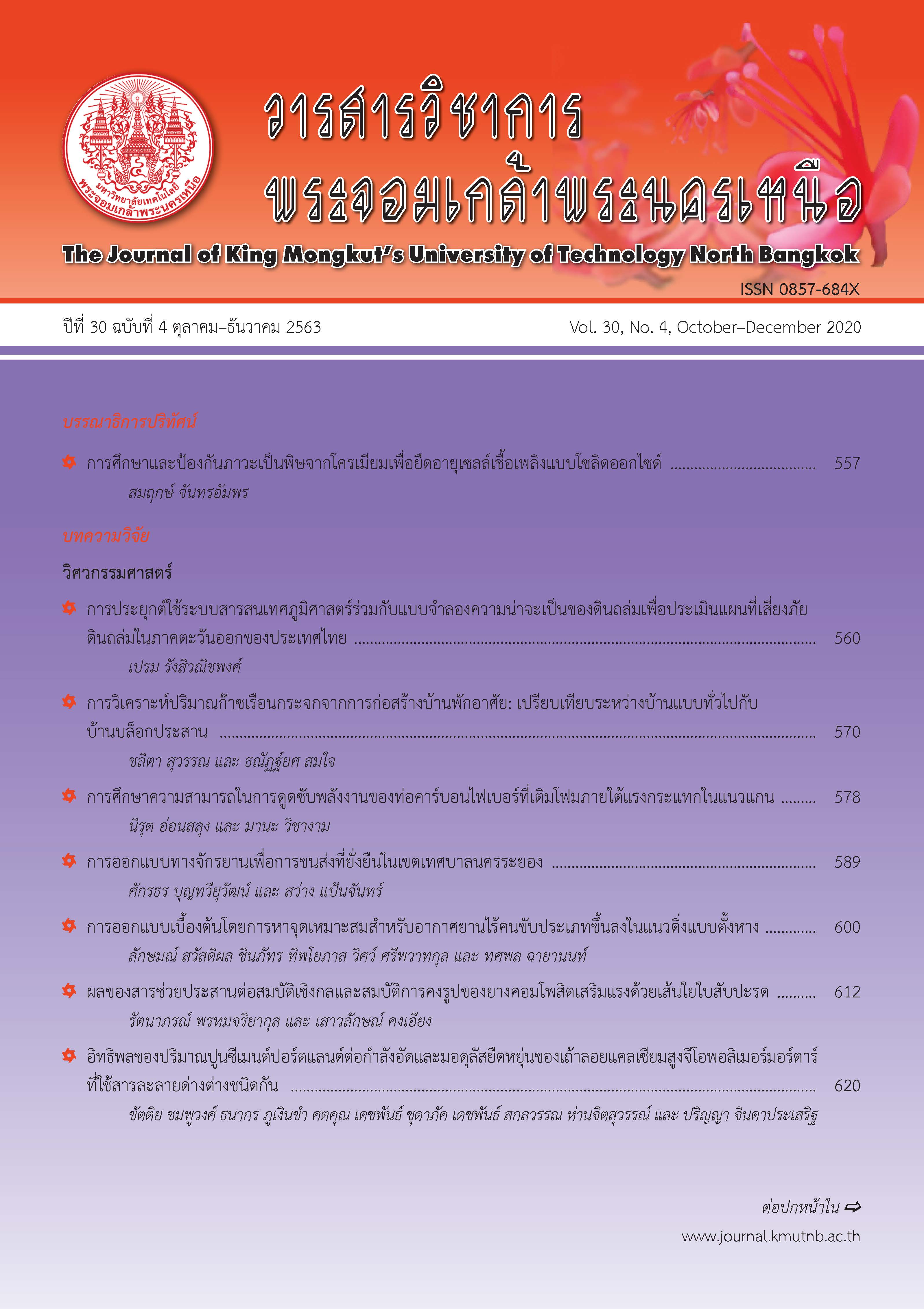Clustering Algorithm Optimization Model for Essential Attribute Analysis of Tour Package Forms Inbound Tourism Market in Thailand
Main Article Content
Abstract
This research proposes the clustering algorithm optimization model for essential an attribute analysis of tour package forms for the market structure of inbound tourism in Thailand. The processes applied are the clustering algorithms with algorithm K-mean, algorithm hierarchical clustering, algorithm random clustering, and algorithm DBSCAN clustering. In addition, attribute analysis with evolutionary optimization algorithm and particle swarm optimization algorithm was performed. Tour packages of inbound tourism market of the official website of Tourism Authority of Thailand B.E. 2561 were gathered, encompassing 717 records on website, each web record contains 26 attributes. The results of clustering algorithm optimization process found that the Particle Swarm Optimization (PSO) algorithm performs the best and the best model is DBSCAN clustering of which 0.813 Davies-Bouldin index value decreases to 0.369, accounting for 54.612% increased efficiency value out of 10 clusters. Furthermore, an essential attribute analysis suggests five attributes in relation to tour package form adaptation, namely beach activities, sporting/golfing, Thai cooking activities, and other pursuits such as riding a long tail boat, taking a Tuk Tuk and getting engaged in a business activity. Research findings will help inbound tour operators develop tour packages in accordance with specific requirements of inbound tourism market.
Article Details
The articles published are the opinion of the author only. The author is responsible for any legal consequences. That may arise from that article.
References
[2] Ministry of Tourism and Sport. (2015, Jul.). Development tourism strategic plan (2016–2020). Ministry of Tourism and Sport Bangkok, Thailand, [Online]. Available: https://www.mots.go.th/ewt_dl_link.php?nid=7114
[3] D. R. Fesenmaier and Z. Xiang, “Introduction to tourism design and design science in tourism,” Design science in tourism, pp. 3–16, 2017.
[4] Office of the nation economic and social development council, “Development nation economic and social no. 12 (2016–2020),” Office of the nation economic and social development council. Bangkok, Thailand, 2019
(in Thai).
[5] W. Yotsawat, S. Purisangkaha, W. Kittirakpunya, and A. Srivihok, “Development of domestic tourists model using clustering and association rule technique case study: Phra Nakhon Si Ayuttaya province,” The Journal of KMUTNB, vol. 27, no. 4, pp. 829–841, 2017 (in Thai).
[6] Q. Liu, Y. Ge, Z. Li, E. Chen, and H. Xiong, “Personalized travel package recommendation,” presented at the 11th IEEE International Conference on Data Mining, ICDM 2011, Vancouver, BC, Canada, December 11–14, 2011.
[7] T. Angsakul and J. Angsakul, “A personalized system for travel attraction recommendation using a clustering technique and analytic hierarchy process,” Suranaree Journal of Social Science, vol. 8, no. 2, pp. 87–109, 2014 (in Thai).
[8] T. Theeramunkong, Introduction to Concepts and Techniques in Data Mining and Application to Text Mining Second Edition. Bangkok: Thammasat University Press, Thammasat Printing House, 2017 (in Thai).
[9] E. M. Jane and E. G. D. P. Raj, “Comparative study on partition based clustering algorithms,” International Journal of Research in Advent Technology, vol. 6, no. 9, pp. 2321–9637, 2018.
[10] J. Han, Data Mining: Concepts and Techniques, Second Edition. University of Illinois at Urbana-Champaign Micheline Kamber, 2006.
[11] A. J. Gates and Y. Y. Ahn, “The impact of random models on clustering similarity,” The Journal of Machine Learning Research, vol. 18, no. 1, pp. 3049–3076, 2017.
[12] RapidMiner. (2019, Jan). Rapid Miner 6.0 User Manual. [Online], Available: https://docs.rapidminer.com/download/RapidMiner-v6-user-manual.pdf.
[13] M. Sibuya, “A random clustering process,” Annals of the Institute of Statistical Mathematics, vol. 45, no. 3, pp. 459–465, 1993.
[14] I. H. Witten and E. Frank, Data Mining: Practical Machine Learning Tools and Techniques, 2nd ed. Morgan Kaufmann, San Francisco, 2005.
[15] X. Yu and M. Gen, Introduction to Evolutionary Algorithms. Springer Science & Business Media, 2010.
[16] R. L. Haupt and D. H. Werner, Genetic Algorithms in Electromagnetics. John Wiley & Sons, 2007.
[17] A. Viji, A. Mary, and T. Jibarajan, “Performance metrics of clustering algorithm,” Indian Journal of Applied Research, vol. 4, no. 8, pp. 165–167, 2014.
[18] K. Jaroenrat, “Particle swarm optimization for open shortest path first network’s traffic engineering,” Information Technology Journal, vol. 11, no. 1, pp. 43–52, 2015 (in Thai).
[19] T. N. Tran, K. Drab, and M. Daszykowski, “Revised DBSCAN algorithm to cluster data with dense adjacent clusters,” Chemometrics and Intelligent Laboratory Systems, vol. 120, pp. 92–96, 2013.
[20] The Department of Tourism. (2018, November). Tourism Authority of Thailand. Ministry of Tourism and Sports. Bangkok, Thailand [Online]. Available: https://www.tourismthailand.org

